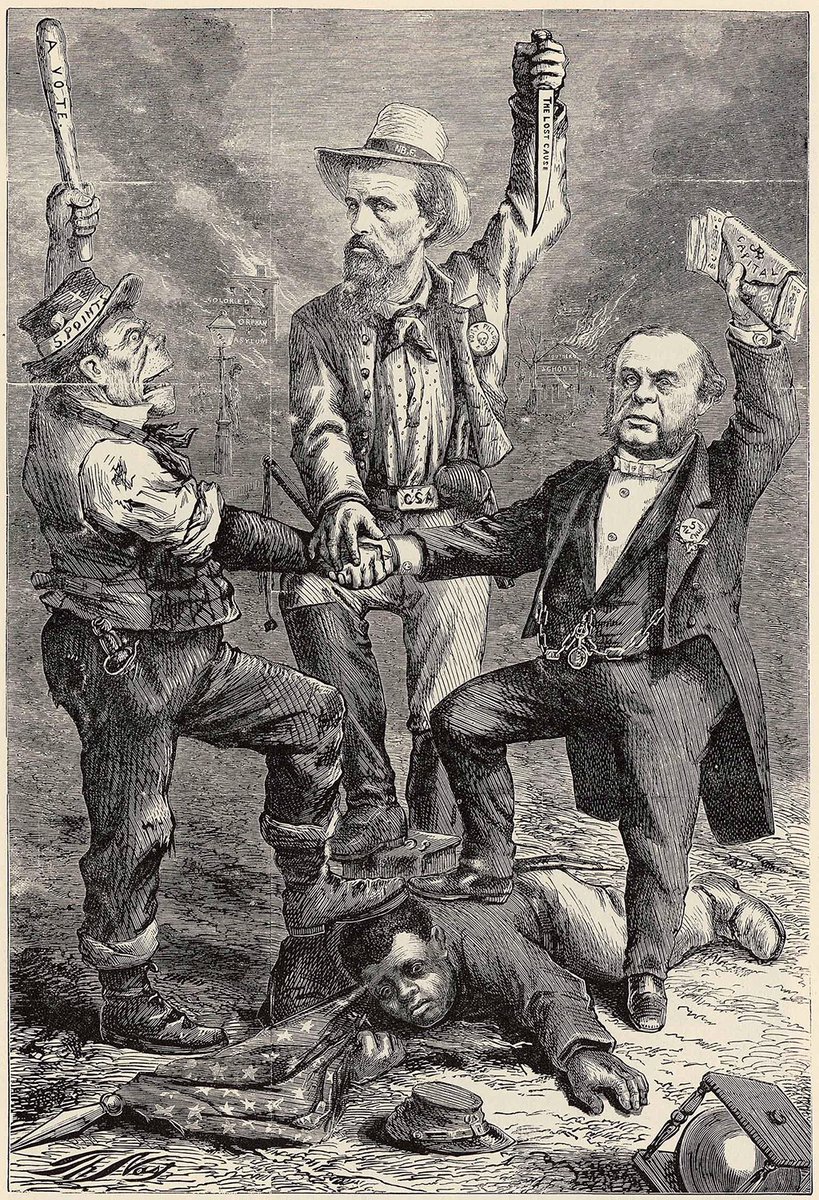
#OTD in 1868, approx. 300 (mostly) Black Republicans embarked on a 25 mile march from Albany, Georgia, to the town of Camilla. They were protesting the expulsion of 33 Black state congressmen (known as the Original 33). Armed white Democrats were waiting for them in Camilla. 

The white mob was incensed by Georgia's new state constitution that was ratified in April of 1868. The new constitution granted Black men the right to vote and hold political office.
Many of the marchers were armed as well. When they reached Camilla the local sheriff, Mumford S. Poore, ordered them to put down their guns or face the wrath of the white mob. The marchers refused to back down and continued to the courthouse lawn to hold a political rally.
The white mob fired upon the marchers once they reached the courthouse, forcing them to flee back to Albany. Approximately 12 marchers were killed and another 30 wounded. A campaign of white supremacist violence followed in order to suppress the Black vote.
The racial terrorism committed at Camilla Massacre had profound affects on the Presidential election of 1868. Many Blacks in southwest Georgia did not vote in the election, fearing for their own safety. White Democrats also committed voter fraud to skew the results.
Congress reinstated military rule in Georgia as a result of the Camilla Massacre.
The town of Camilla did not publicly acknowledge the massacre until 1998.
#TheCivilWarDoc #Reconstruction #Georgia #CamillaMassacre #Camilla #WhiteSupremacy #Terrorism #onthisday #TodayInHistory
The town of Camilla did not publicly acknowledge the massacre until 1998.
#TheCivilWarDoc #Reconstruction #Georgia #CamillaMassacre #Camilla #WhiteSupremacy #Terrorism #onthisday #TodayInHistory
• • •
Missing some Tweet in this thread? You can try to
force a refresh















